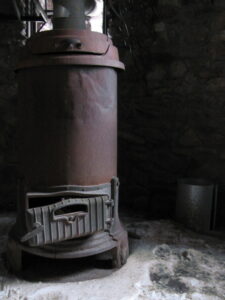This is a tricky subject for many readers. While we believe it’s important that everyone knows exactly what a standing pilot light is, newer furnaces are simply built without them. Now, if you’re asking, “How does a furnace work without a pilot light?” then you’re starting to ask the right questions.
In order to help our customers the most, we’ll need to do a deep dive into pilot lights. We’ll discuss what they are, why they work the way they do–and most importantly, why they’ve been phased out since the early 2000s.
Just remember that even if your furnace doesn’t have a standing pilot light, it still shouldn’t be fixed or opened up by an untrained person. Only a licensed furnace professional should handle the inner workings of a gas furnace, otherwise, you could experience safety concerns or fire hazards!
What Exactly Is a Standing Pilot Light?
Back in the day, in order for a gas furnace to turn on automatically, it needed to ignite. This can be a relatively difficult task without flint, or some kind of spark being created at a moment’s notice. Some very old furnaces literally require manual ignition in order to start working properly, which is why they can sometimes require multiple people to operate appropriately.
The standing pilot light was a solution to this problem. It allowed your furnace to ignite on its own due to a small light (the size of a tiny candle) staying lit indefinitely. This tiny light would ignite the burners when your furnace received a signal from the thermostat, and you’d get powerful heating all automatically!
Electric Ignition Systems
Eventually, around 2010, furnaces with pilot lights started getting outsold by units with electric ignition systems. This meant an electric spark caused the pilot light to come on only when there was a demand for heat. Otherwise, the system was shut down completely.
Safety, Convenience, and Efficiency
For obvious reasons, electric ignition systems became the new most common type of ignition in gas furnaces.
- It’s much more efficient, saving gas for when you need it to heat your home.
- It’s also much safer because it doesn’t involve a standing flame in your home at all times.
- Let’s be honest, it’s also more convenient to have an electric system to convey the demand for heat to your furnace, rather than an old pilot light that stays on all the time. If the pilot light burns out, it usually needs to be relit manually.
Pilot lights aren’t bad or inherently dangerous, they’re just only found in older furnaces. If your pilot light is flickering, constantly going out, or burning a bright orange flame due to unwanted fumes, then you’ll want to get it fixed.
Choose Our Team for Professional Help
Trying to work on your gas furnace on your own can lead to a whole host of other problems. We’re talking about flammable gas lines here, and even just minor DIY work can land you into legal hot water. And that’s not to mention the safety concerns you might encounter.
Trust our team for fast and easy professional gas furnace repairs, regardless of whether your system uses an electric ignition or an old-fashioned pilot light.
When you need it done right contact Professional Heating & Air.

